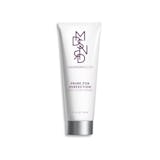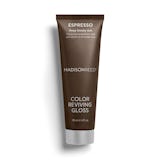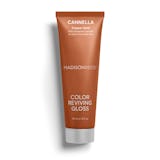Why Are Bond-Building Products Good for Colored Hair?
Bond-building treatments are designed to strengthen your hair but there’s a specific reason why they’re essential for color-treated hair.
If you understand how hair color works, you know it’s more complex than it appears. For the color to take hold, it needs to penetrate your hair and lock itself within the cortex. To do this, the color must break some of your hair's natural bonds. This process is especially crucial when highlighting, which involves the use of bleach.
This might have far-reaching consequences, from hair breakage to frizz. You can, of course, help prevent it, but your hair needs proper nourishment to rebuild the bonds. And this is exactly why bond-building treatments are so necessary. They enable you to reverse the damage caused by the chemical reactions involved in hair coloring, helping to reduce the impact of processing on your hair’s condition.
Bond building isn't just essential for color-treated hair – it's also crucial for hair that's regularly heat-styled. Heat-styling tools, along with everyday wear and tear from environmental stressors like sun exposure, brushing, and washing, can cause breakage and damage to your hair's bonds.
The Consequence of Broken Hair Bonds
What if you prefer to skip bond-building treatments in your hair care routine? The impact will vary depending on your hair type, the color used, and other factors. However, there are some potential risks to consider:
Hair breakage: without repairing the bonds, your hair will break much more easily
Frizzy hair: if you don’t rebuild your hair bonds after coloring, you might suffer from frizzy hair that is unpleasant in texture
Less shine: broken bonds might even cause your hair to be less shiny and more dull-looking
Okay, but how likely are these effects to occur on colored hair? Quite likely, actually, although you might not always experience them. However, one factor that significantly increases the chances of these side effects is the use of bleach.
We previously wrote an article titled: Is Your Hair Healthy Enough to Go Blonde?, and the name is intentional. If you bleach your hair, it can cause significantly more damage, including breaking your hair’s bonds. Thus, if you want to go more than two shades lighter and use bleach to achieve the desired color, a bond-building treatment and hair care regimen is a must-have to repair and prevent further damage.































